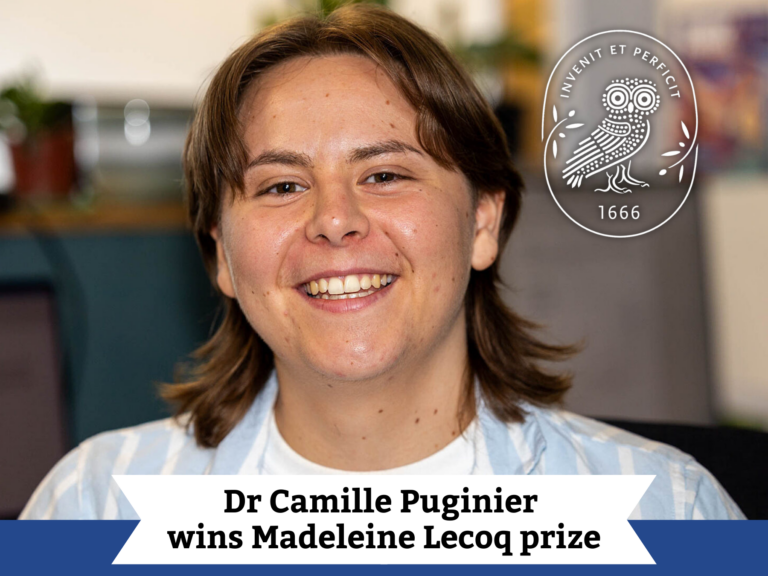“Whodunnit” of Irish potato famine solved
An international team of scientists reveals that a unique strain of potato blight they call HERB-1 triggered the Irish potato famine of the mid-nineteenth century.
It is the first time scientists have decoded the genome of a plant pathogen and its plant host from dried herbarium samples. This opens up a new area of research to understand how pathogens evolve and how human activity impacts the spread of plant disease.
Phytophthora infestans changed the course of history. Even today, the Irish population has still not recovered to pre-famine levels. “We have finally discovered the identity of the exact strain that caused all this havoc”, says Kentaro Yoshida from The Sainsbury Laboratory in Norwich.
For research to be published in eLife, a team of molecular biologists from Europe and the US reconstructed the spread of the potato blight pathogen from dried plants. Although these were 170 to 120 years old, they were found to have many intact pieces of DNA.
"Herbaria represent a rich and untapped source from which we can learn a tremendous amount about the historical distribution of plants and their pests - and also about the history of the people who grew these plants," according to Hernán Burbano from the Max Planck Institute for Developmental Biology.
The researchers examined the historical spread of the fungus-like oomycete Phytophthora infestans, known as the Irish potato famine pathogen. A strain called US-1 was long thought to have been the cause of the fatal outbreak. The current study concludes that a strain new to science was responsible. While more closely related to the US-1 strain than to other modern strains, it is unique. "Both strains seem to have separated from each other only years before the first major outbreak in Europe," says Burbano.
The researchers compared the historic samples with modern strains from Europe, Africa and the Americas as well as two closely related Phytophthora species. The scientists were able to estimate with confidence when the various Phytophthora strains diverged from each other during evolutionary time. The HERB-1 strain of Phytophthora infestans likely emerged in the early 1800s and continued its global conquest throughout the 19th century. Only in the twentieth century, after new potato varieties were introduced, was HERB-1 replaced by another Phytophthora infestans strain, US-1.
The scientists found several connections with historic events. The first contact between Europeans and Americans in Mexico in the sixteenth century coincides with a remarkable increase in the genetic diversity of Phytophthora. The social upheaval during that time may have led to a spread of the pathogen from its center of origin in Toluca Valley, Mexico. This in turn would have accelerated its evolution.
The international team came to these conclusions after deciphering the entire genomes of 11 historical samples of Phytophthora infestans from potato leaves collected over more than 50 years. These came from Ireland, the UK, Europe and North America and had been preserved in the herbaria of the Botanical State Collection Munich and the Kew Gardens in London.
"Both herbaria placed a great deal of confidence in our abilities and were very generous in providing the dried plants," said Marco Thines from the Senckenberg Museum and Goethe University in Frankfurt, one of the co-authors of this study. "The degree of DNA preservation in the herbarium samples really surprised us," adds Johannes Krause from the University of Tübingen, another co-author. Because of the remarkable DNA quality and quantity in the herbarium samples, the research team could evaluate the entire genome of Phytophthora infestans and its host, the potato, within just a few weeks.
Crop breeding methods may impact on the evolution of pathogens. This study directly documents the effect of plant breeding on the genetic makeup of a pathogen. "Perhaps this strain became extinct when the first resistant potato varieties were bred at the beginning of the twentieth century," speculates Yoshida. “What is for certain is that these findings will greatly help us to understand the dynamics of emerging pathogens. This type of work paves the way for the discovery of many more treasures of knowledge hidden in herbaria.”
The following authors contributed to the publication: Kentaro Yoshida, Liliana M. Cano, Marina Pais and Sophien Kamoun of the Sainsbury Laboratory in Norwich (UK); Verena J. Schuenemann and John Krause of the University of Tuebingen (Germany); Bagdevi Mishra, Rahul Sharma and Marco Thines of the Goethe University and Senckenberg Museum and Goethe University in Frankfurt (Germany); Frank N. Martin of the U.S. Department of Agriculture in California (US); Christa Lanz, Detlef Weigel and Hernán A. Burbano of the Max Planck Institute for Developmental Biology in Tuebingen (Germany).
The study was funded by the European Research Council, the Gatsby Charitable Foundation, the Biotechnology and Biological Sciences Research Council of the UK, the Campaign for the Development of Scientific and Economic Excellence in Hesse (LOEWE), the Deutsche Forschungsgemeinschaft and the Max- Planck Society.
Source:
Kentaro Yoshida et al.
Rise and fall of the Phytophthora infestans lineage that triggered the Irish potato famine
eLife, in press, doi 10.7554/elife.00731
available at http://ow.ly/l6wa3
Contact
Prof Sophien Kamoun, +44 7515 392458, Sophien.Kamoun@sainsbury-laboratory.ac.uk
Prof Detlef Weigel, +49 179 676 9032, weigel@weigelworld.org
Dr Hernán Burbano, +49 163 6031143, hernan.burbano@tuebingen.mpg.de
Dr Frank Martin, +1 831 755-2873, Frank.Martin@ARS.USDA.GOV
Scientists who can provide second voice comment on the study
Potato and tomato pathogen experts:
David Baulcombe (UK), dcb40@cam.ac.uk
Paul Birch (UK), paul.birch@hutton.ac.uk
William Fry (US), wef1@cornell.edu
Brian Staskawicz (US), stask@berkeley.edu
Herbarium and ancient DNA experts:
Sandy Knapp (UK), s.knapp@nhm.ac.uk
Beth Shapiro (US), bashapir@ucsc.edu
Ed Green (US), ed@soe.ucsc.edu
Janet Kelso (Germany), kelso@eva.mpg.de
Photo material:
A potato specimen from the Kew Garden herbarium, collected in 1847, during the height of the Irish famine. The legend reads “Botrytis infestans”, because it was not known yet that Phytophthora does not belong to the mildew causing Botrytis fungi.
Download at http://ow.ly/l6wC1


